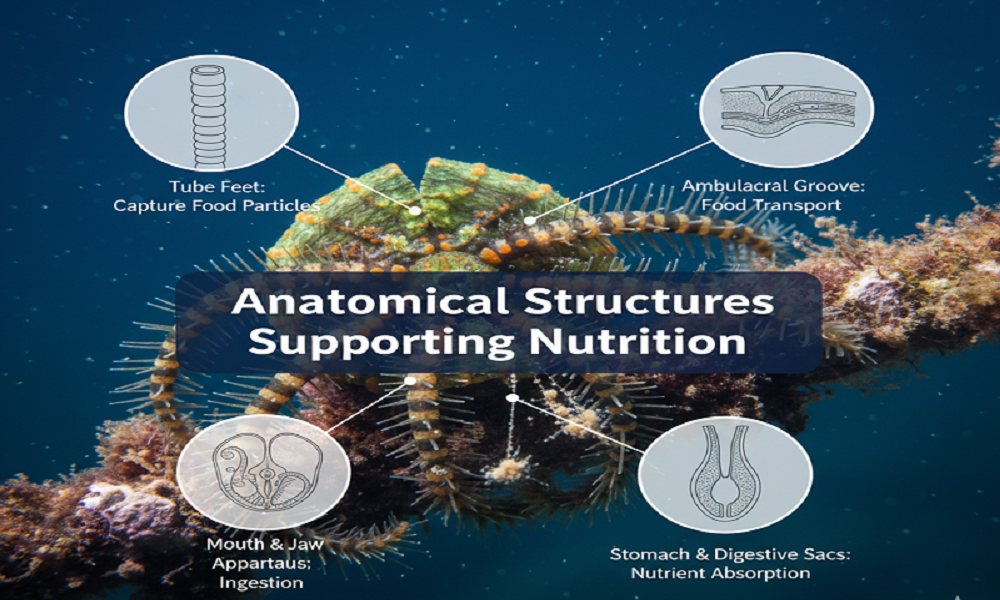How Brittle Stars Obtain Nutrition

Brittle stars are among the ocean's most intriguing creatures, and their methods of obtaining nutrition are just as fascinating as the animals themselves. These star-shaped echinoderms, scientifically known as Ophiuroidea, have evolved several sophisticated feeding strategies that allow them to thrive in diverse marine environments. Unlike their more famous relatives, the starfish, brittle stars employ a variety of nutritional approaches that reflect their adaptability and ecological importance.
The Detritivore Strategy
One of the primary ways How Do Brittle Stars Obtain Nutrition is by consuming organic debris, a practice known as detritivory. As the ocean floor accumulates dead plant material, decomposing organisms, and other organic particles, brittle stars position themselves to capture this nutrient-rich debris. They use their long, flexible arms to sweep across the seafloor, collecting food particles that settle to the bottom. This scavenging behavior is particularly important in maintaining the health of marine ecosystems, as these creatures help break down and recycle dead organic matter. In deep-sea environments where food is scarce, this detrital feeding becomes especially valuable, allowing brittle stars to make use of every available nutrient source.
Active Feeding and Predation
Beyond passive scavenging, many brittle star species engage in active predation and feeding. Some species are known to capture small crustaceans, worms, and other invertebrates. Their arms are covered with specialized tube feet equipped with sensory cells that help them detect movement and locate prey. When a suitable meal is found, the brittle star's flexible arms work together to manipulate and bring food toward its mouth, which is positioned on the underside of its central disc. This coordinated arm movement demonstrates remarkable dexterity and allows these creatures to handle prey larger than one might initially expect from such delicate-looking animals.
Suspension Feeding and Plankton Capture
Some brittle star species have evolved to become suspension feeders, capturing tiny plankton and organic particles directly from the water column. These brittle stars extend their arms in specific postures that catch passing currents and incoming food particles. Their tube feet are covered with adhesive mucus that traps microscopic organisms and organic matter. Once sufficient food is collected, they retract their arms and transfer the trapped particles to their mouth. This feeding strategy is particularly efficient in environments with strong currents that carry abundant plankton and nutrients, allowing brittle stars to feed without expending significant energy moving about.
Symbiotic and Opportunistic Feeding
Brittle stars also demonstrate impressive opportunistic feeding behaviors. Some species are known to associate with sponges and corals, where they can take advantage of leftover food scraps from their host organisms or capture prey attracted to the same areas. This commensal relationship benefits the brittle stars without typically harming their hosts. Additionally, some brittle stars engage in what scientists call "kleptoplasty-like" behavior, though this is less documented than in other marine organisms. They have been observed consuming plant material directly in some cases, allowing them to diversify their Nutritional intake based on environmental availability.
Digestion and Nutrient Absorption
Once food is obtained through any of these methods, brittle stars employ an efficient digestive system. Their stomachs can expand to accommodate various food sizes, and they possess specialized enzymes that break down proteins and organic compounds. Interestingly, some brittle stars can actually expel their stomach lining if necessary, a process called evisceration. While primarily a defense mechanism against predators, this ability also suggests their digestive system's remarkable adaptability and resilience.
Conclusion
The nutritional strategies of brittle stars reveal the sophistication of even seemingly simple marine creatures. By combining detritivory, active predation, suspension feeding, and opportunistic behaviors, these echinoderms have secured their place as successful inhabitants of ocean ecosystems worldwide. Their flexible approach to feeding demonstrates how evolutionary adaptation allows organisms to thrive across varied marine habitats, from shallow reefs to the deepest ocean trenches. Understanding how brittle stars obtain nutrition provides valuable insight into ocean food webs and the intricate relationships that keep marine environments healthy and balanced. More info
- Art
- Causes
- Crafts
- Dance
- Drinks
- Film
- Fitness
- Food
- Games
- Gardening
- Health
- Home
- Literature
- Music
- Networking
- Other
- Party
- Religion
- Shopping
- Sports
- Theater
- Wellness
